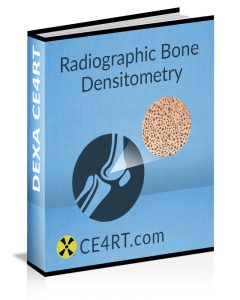Role of Physical Activity in Bone Health of Adults

As in childhood and adolescence, the role of physical activity in bone health is important throughout the adult years as well. Healthcare providers should promote physical activity in all adults according to their capabilities. In addition to healthy bones, regular physical activity is beneficial in maintaining an optimum body weight. It also improves muscle strength and cardiovascular fitness. It keeps metabolic parameters in check. Resistance training and weight-bearing impact activities have been demonstrated to be especially beneficial to skeletal health. Examples of bone-healthy physical activities include walking, jogging, running, jumping, climbing stairs, lifting weights, racquet sports, soccer, dancing, and hiking.
Physical Activity Intensity and Duration
To promote healthy bones, the recommendation is for adults to participate in at least 30 minutes of moderate-intensity physical exercise on all or most days of the week. It has been found that increasing the duration or intensity of exercise, i.e., 20 minutes or more of strenuous physical activity or a longer duration of moderate-intensity exercise, is the best way to promote cardiovascular health. Adding strength training and resistance exercises to this cardiovascular fitness regimen has been found to be beneficial to the skeleton.
Dangers of Sedentary Lifestyle
Despite the fact that the role of physical activity in bone health is well understood, many adults settle into a sedentary lifestyle. Initiating and maintaining a regular physical exercise regimen becomes a huge challenge. Health providers should inform patients that engaging in even a small amount of daily physical activity is better than no exercise at all. It is often easier for people to begin with more modest goals. Everyone can start by incorporating physical activity into their daily routine. This can include things such as doing yard-work and parking at the far end of the lot. Other strategies include getting off one stop early from public transport or using the stairs instead of the escalator or elevator.

Compliance with Physical Activity
In addition to explaining the role of physical activity in bone health, healthcare providers should guide patients on ways to achieve better compliance with physical activity regimens in the long-term. For example, involving family and friends in activities is a good idea. Beginning with moderate intensity regimens according to capability is also recommended. Participating in programs that can be accomplished at home can aid compliance. Being flexible in the choice of activities helps. Initiating programs with inbuilt feedback and incentives are also ways of improving long-term compliance.
In addition, compliance is usually better when the physical activity involves something the individual enjoys doing. This could be walking with a friend, participating in a community dance class, or doing yardwork and gardening. Healthcare professionals should talk about the role of physical activity in bone health. They should also encourage individuals to find an activity they enjoy. Switching to a different activity when they start to lose interest or get bored with their current routine may be recommended.
Additional Resources
The National Osteoporosis Foundation offers many patient education materials including videos on specific exercises. Patients can be guided to these websites and resources for information on safe and effective physical activity with the correct posture.
Lifestyle Factors
In addition to the role of physical activity in bone health, many lifestyle factors are important. Both tobacco use and excessive alcohol consumption have been linked to an increased risk of fractures. Health providers should encourage patients to quit smoking and consume alcohol in moderation. This not only optimizes bone health but is also beneficial to the individual’s overall health and wellbeing. General safety measures, such as the use of seat belts in motor vehicles and injury prevention strategies to reduce the risk of traumatic fractures, should also be discussed by healthcare providers.
Bone Health During Pregnancy and Lactation
Unlike the role of physical activity in bone health which is well understood, there is limited data available on the effect of pregnancy and lactation on the mother’s bone density. There is some evidence to suggest that a transient decrease in bone density occurs in women who are pregnant or lactating. In healthy women, however, the skeleton quickly recovers once lactation ceases. In general, pregnancy and lactation have no long-term detrimental effects on a woman’s bone health.
Healthcare providers should advise pregnant and lactating women to follow the recommendations from their obstetrician with regards to nutrition and physical activity. The recommended intake of calcium and vitamin D during pregnancy and lactation is 1,000 mg and 200 IU, respectively. In pregnant and lactating teens under the age of 18, however, a higher intake of 1,300 mg of calcium every day is recommended. Of course, the role of physical activity in bone health must also be discussed with this group of patients to eduate them.
Earn X-ray Continuing Education Credits
We offer a range of e-courses to earn ARRT® category A CE credits. To complete your X-ray CE requirements, please purchase one of our courses. These courses are valid for ARRT® and other national and state registries. Our 23-credit bone densitometry course is a great way to refresh your knowledge on bone imaging and earn most of the required biannual CEUs quick and easy.
Get more information about online ce credits for radiologic technologists.
